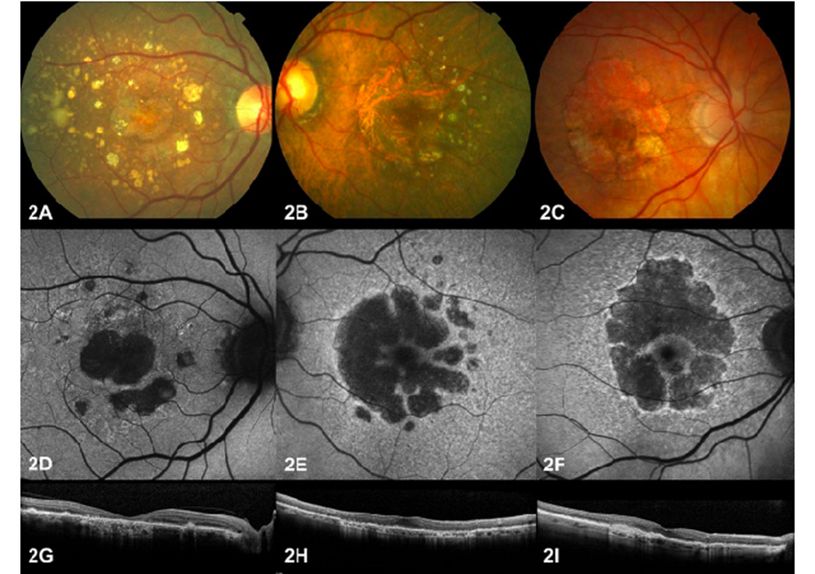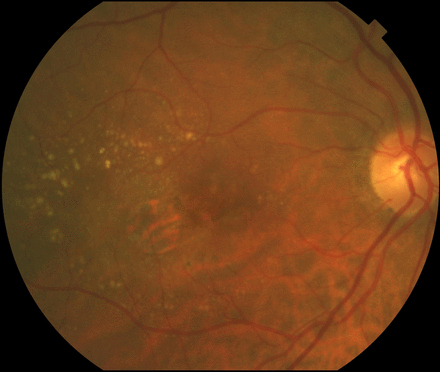The BJO publishes a new classification of geographic atrophy subtypes identified by BMF researchers
The British Journal of Ophthalmology (BJO) has disseminated the BMF's clinical study as part of the EYE-RISK European project to identify ocular phenotypes in patients with geographic atrophy (GA). The research characterises three types of GA, one of which describes a particularly slow growth pattern. The characteristics studied have proved to be important for the prognosis of the condition. They have also helped to establish both the eligibility of those affected in clinical studies and phenotype-genotype correlations.
The study was conducted by monitoring patients with GA (the most advanced type of atrophic AMD) over an average of 1.5 years. The methodology of cluster analysis was used to identify sub-groups among the population studied, based on the presence of certain fundus characteristics, such soft drusen or reticular pseudodrusen (RPD), primary foveal atrophy or elevated fundus autofluorescence, among others.
You can read the whole article here.

EYE-RISK is funded by the European Union's Horizon 2020 Research and Innovation Programme under Grant Agreement 634479.


